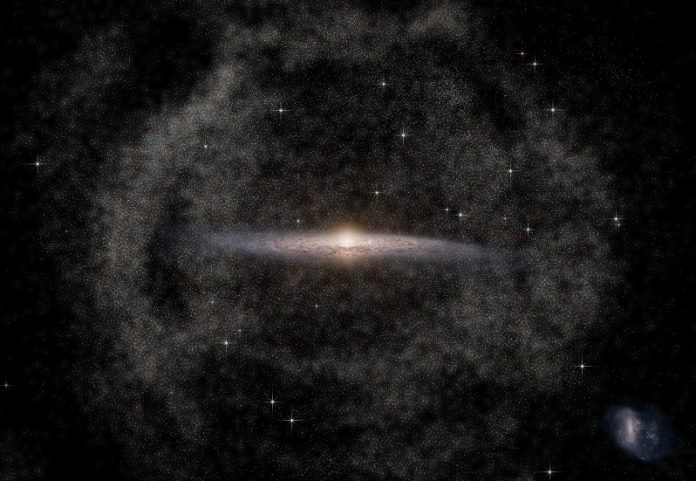
Our Milky Way galaxy has a history of colliding with other galaxies.
The European Space Agency’s Gaia space telescope has now revealed that the last big collision happened much more recently than previously thought.
This discovery helps us understand how our galaxy has grown and changed over time.
Galaxies grow by merging with other galaxies. When this happens, the merging galaxies can create “wrinkles” in the star populations, affecting how stars move and behave.
Gaia aims to uncover the history of our galaxy by studying these wrinkles.
It does this by tracking the positions and motions of over 100,000 stars near our Sun, which is a small fraction of the 2 billion stars it observes.
Thomas Donlon, from the Rensselaer Polytechnic Institute and the University of Alabama in Huntsville, led the new Gaia study published in the Monthly Notices of the Royal Astronomical Society.
“We get wrinklier as we age, but the Milky Way is like a cosmic Benjamin Button, getting less wrinkly over time,” says Donlon.
“By studying these wrinkles, we found that the Milky Way’s last big crash happened billions of years later than we thought.”
Gaia discovered these galactic wrinkles in 2018. The new study is the first to accurately determine the timing of the collision that caused these wrinkles by comparing Gaia’s observations with simulations of galaxy mergers.
The Milky Way’s halo contains many stars with unusual orbits, believed to have joined our galaxy during its “last major merger.” This event was thought to have occurred between 8 and 11 billion years ago and involved a massive dwarf galaxy. Scientists called this event Gaia-Sausage-Enceladus (GSE).
However, new Gaia data suggests another merger brought in the unusually moving stars.
“For the wrinkles to be as clear as they are in Gaia’s data, they must have formed less than 3 billion years ago—at least 5 billion years later than previously thought,” explains Heidi Jo Newberg, also of the Rensselaer Polytechnic Institute.
“If these stars had joined us 8 billion years ago, the wrinkles would be too close together to see as separate features.”
The new findings suggest that the stars came from a more recent event, named the Virgo Radial Merger, which took place less than 3 billion years ago. This recent collision has changed our understanding of the Milky Way’s history.
While there is evidence that the GSE merger occurred long ago, recent work has questioned whether a massive ancient merger is needed to explain the Milky Way’s current properties. Some stars previously thought to be from the GSE event might have come from multiple mergers.
In 2020, Thomas Donlon led a study that identified wrinkles in the Milky Way’s stars and compared these to simulated mergers.
“By comparing the shapes and number of wrinkles over time, we pinpointed when the simulation matched Gaia’s data.
We found that the wrinkles were likely caused by a dwarf galaxy colliding with the Milky Way about 2.7 billion years ago, which we called the Virgo Radial Merger,” says Donlon.
Thomas and his colleagues continue to explore this merger, refining the idea that many of the oddly moving stars and debris in the Milky Way’s inner halo came from this more recent collision.
They are also re-evaluating whether the stars associated with the GSE event came from multiple ancient mergers.
“The Milky Way’s history is constantly being rewritten, thanks to new data from Gaia,” adds Donlon. “Our understanding of these mergers is rapidly evolving, and this finding—that a large portion of the Milky Way joined us within the last few billion years—is a significant change from what astronomers previously thought.”
Gaia’s mission has been incredibly productive, transforming our view of the cosmos. The space telescope has compiled an unmatched dataset of the positions, distances, and motions of around 1.5 billion stars.
“Gaia is revolutionizing our understanding of the universe,” says Timo Prusti, Project Scientist for Gaia at ESA. “This discovery helps us understand the complex events that shaped the Milky Way and how galaxies form and evolve.”
In summary, Gaia has revealed that the Milky Way’s last major collision happened much more recently than expected, providing new insights into the history and evolution of our galaxy.



